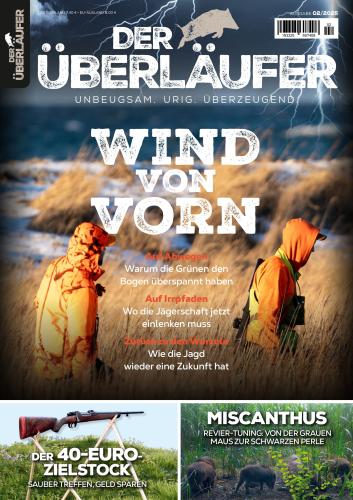![Katarzyna Solecka - Alla Polacca (2022) [FLAC 24bit/96kHz] Download](https://i0.wp.com/imghd.xyz/images/2022/05/23/ykuylvjohr85b_600.jpg?resize=500%2C500&ssl=1)
Katarzyna Solecka – Alla Polacca (2022)
FLAC (tracks) 24 bit/96 kHz | Time – 01:05:07 minutes | 1,30 GBGenre: Classical
Studio Masters, Official Digital Download | Front Cover | © Da Vinci Classics
Alla Polacca is an invitation to delve into the world of sounds, scents and flavours of Poland and Polish folklore. What is presented here is a journey through Poland and Polish culture through the eyes of various European and Polish composers who lived, worked or traveled to Poland in the seventeenth and eighteenth century and whose compositions present elements of the Polish style.
style=”text-align: center;”>![Katarzyna Solecka - Alla Polacca (2022) [FLAC 24bit/96kHz] Download](https://i0.wp.com/imghd.xyz/images/2022/05/23/ykuylvjohr85b_600.jpg?resize=500%2C500&ssl=1)
Katarzyna Solecka – Alla Polacca (2022)
FLAC (tracks) 24 bit/96 kHz | Time – 01:05:07 minutes | 1,30 GBGenre: Classical
Studio Masters, Official Digital Download | Front Cover | © Da Vinci Classics
Alla Polacca is an invitation to delve into the world of sounds, scents and flavours of Poland and Polish folklore. What is presented here is a journey through Poland and Polish culture through the eyes of various European and Polish composers who lived, worked or traveled to Poland in the seventeenth and eighteenth century and whose compositions present elements of the Polish style.
To begin with, discussing music of the Polish Baroque as well as different relations and cultural exchange between Polish and European composers, it is impossible to ignore historical events that had a direct influence on the state of the nation and its culture. In the seventeenth-century Poland a dynamic, open-minded country welcoming enthusiastically new artistic ideas coming from the Southern and Western Europe. The reign of both Vasa kings – Zygmunt III and Władysław IV was a period of outstanding excellence in Polish music both of them being great lovers of the arts. Zygmunt III Vasa reorganised the royal ensemble and recruited many Italian musicians who constituted an important part in the orchestra till his death. Władysław IV continued his work and brought to Poland many eminent Italian artists who worked alongside the renowned Polish musicians and composers for the famous Royal Chapel at a newly founded opera theatre in Warsaw.
These migrations reveal a network of musicaland culture-related connections that existed between Italy and Poland as well as expose the considerable impact of Italian musicians who, during their lives, pursued their activities in various cultural centres.
Tarquinio Merula (ca. 1595-1665) most probably came to Warsaw around 1621 and stayed here untill the first months of 1626 in the service of the Polish king Zygmunt III Vasa. His style had a great impact on the output of the Polish musicians at the Royal Chapel. He was the first to compose the pieces for the solo voice with the accompaniment of the violin and basso continuo. More than ten years after his return to Italy he published the collection “Canzoni overo Sonate Concertate per chiesa e camera” op. 12 where the piece “La Polachina” with some Polish folklore elements can be found.
Another Italian composer who had a possibility to visit Poland during his life was Carlo Farina (ca. 1600-1639). He was born in Mantova and was an one of the most important Italian violinists of the early seventeenth century. He spent important part of his life at the court of Dresden, working close to Henrich Schütz. Then he spent some time working in Bonn, Parma, Lucca and Massa. 1636 he left Italy and went to Gdańsk, where he was offered the violinist position in the municipal orchestra. Although his stay in the Dresden music court was brief, nevertheless it had a lasting effect, as he brought the Italian sonata and violin style to the German speaking countries. During his stay in Dresden he published five volumes, among them sonatas for 2, 3, 4 instruments and basso continuo. Most of them have titles that depict the actual character of the piece. For example in the Sonata detta La Polaca, he uses some Polish dance rhythms.
Adam Jarzębski (1590-1648), one of the leading Polish composers of the seventeenth century, was a violinist, rhymist and author of the delightful work The Highway or a Portrayal of Warsaw. From 1617 he was a member of the Royal Chapel where he worked during the years of its exuberant development under the kapellmeisters A. Pacelli, A. F. Arnerio and M. Scacchi. He remained in the chapel until his death. His legacy consists of a collection entitled Canzoni e Concerti, comparable to the works of the Italian pioneers of violin music, with whom Jarzębski became acquainted during his year-long stay in Italy. This collection is of particular importance in the history of Polish music, because apart from three fantasies by Mikołaj Zieleński, it is the first fairly large set of Polish compositions for instrumental ensembles. We can find two of the pieces Bentrovata and Sentinella in this album. Each piece sets a different mood, creating a specific musical picture.
The next composer present on this CD is Marcin Mielczewski (1600-1651). He was active at the royal Polish court during the same period as Adam Jarzębski, and the two composers played together in the Royal Chapel. His focus as a composer was sacred vocal instrumental music and arias, sonatas and canzonas for instrumental ensemble. Mielczewski achieves some very interesting results by combining elements of the Italian style with intrinsically Polish motifs in his canzonas and the two of them Canzona Prima and Terza a tre are presented in this collection.
Giovanni Matteo Picchi (1572-1643) was born, lived and worked most of his life in Venice, and concentrated on performing and composing for the keyboard, developing a musical practice closely linked to dance music, which enjoyed widespread popularity and a prestigious tradition in Venice. He was a versatile musician, perfectly at ease in the practice of both secular and church music. In 1619, Picchi published Intavolatura di balli d’arpicordo, one of the rare collections of music for keyboard in the lagoon territory tradition focused on contemporary dance music. In the collection we can find Ballo alla Polacha, that constitutes also a part of this CD.
Another noteworthy aspect is the links between the royal ensemble of the Polish king and musicians from Gdańsk, which remained under Polish rule, but enjoyed considerable autonomy and possessed a specific culture characterised by strong ties to Protestant Germany. Furthermore, throwing an eye on the mid-eighteenth-century Germany, it can be noticed that the Germans were becoming increasingly fascinated by the Polish style in music. One of the reasons for that was the political union between Poland and Saxony; on the other side there was an important influence of Georg Philipp Telemann (1681-1767) who was a great enthusiast of seeking inspiration in Polish music. He worked in Silesia at the court of Count Erdmann II. With Erdmann, Telemann had traveled through the Republic, stopping at roadside taverns and inns where he listened with pleasure and admiration to the Polish players who entertained the people with popular melodies. No other German composer before or since had shown a comparable interest in the Polish style or drawn a comparable amount of inspiration from Polish music. In his own lifetime, Telemann was regarded by many Germans as an unquestioned authority on the art of composition, and his interest in Polish music was duly noted by fellow composers and music theorists. In this CD two Telemann’s compositions are presented: Concerto alla Polonese and Sonata “Polonese”.
Even if Telemann is considered the first to have propagated Polish music and the Polish style in Germany, its popularity was also due to Polish musicians such as bagpipers, bandora, and hurdy-gurdy players and other folk musicians who traveled accross Germany in search for jobs. Such itinerant musicians often were depicted in seventeenth-century German picaresque novels that at that time enjoyed their literary heyday. One of the most popular anthologies of this type of stories was entitled Der pohlnische Sackpfeiffer (The Polish bagpiper). These Polish bagpipes were imitated musically in the seventeeth-century instrumental works. The most interesting example is a sonata called Polnische Sackpfeiffen, by the Austrian violinist and musician Johann Heinrich Schmelzer (1620-1680). Nothing is known about his early years, but he seems to have arrived to Vienna during the 1630s and remained composer and musician at the Habsburg court for the rest of his life. He was one of the most relevant violinists of the period and had a great impact on the later German and Austrian composers of the music for the violin. His sonata Polnische Sackpfeiffen is one of many examples of instrumental program music of the period, in which different sound effects were used in order to create vignettes set in a Polish context. Its copy can be found in the famous anthology of seventeenth-century instrumental music named the Codex-Rost.
Another composer who used the Polish style and found in Poland the inspiration for some of his compositions was Johann Valentin Meder (1649-1719). “The famous kapellmeister of Gdańsk”, described in this way by Johann Mattheson in his famous compendium Grundlage einer Ehren-Pforte, arrived to Gdańsk in the summer of 1686 where most probably he traveled in search of a well-paid post matching his ambitions. He officially took up the position of the city council kappelmeister on 24th May 1687 and was very active in Gdańsk for almost 12 years. The composer wrote vocal-instrumental church and secular music as well as solely instrumental pieces. The only examples of his instrumental works are Trio-Chaconne written in Gdańsk in 1698 and a composition for string instruments Der Polnische Pracher, also written in Gdańsk, in 1689 that can be find in this album. Its manuscript is to be found in the library of the Polish Academy of Sciences in Gdańsk. The piece is speculated to contain not only allusions to Polish itinerant musicians but even the influence of klezmer music.
Tracklist:
1-01. Ensemble Giardino di Delizie – Concerto all Polonese, TWV 43:G7: I. Dolce (02:13)
1-02. Ensemble Giardino di Delizie – Concerto all Polonese, TWV 43:G7: II. Allegro (02:27)
1-03. Ensemble Giardino di Delizie – Concerto all Polonese, TWV 43:G7: III. Largo (01:57)
1-04. Ensemble Giardino di Delizie – Concerto all Polonese, TWV 43:G7: IV. Allegro (01:50)
1-05. Ensemble Giardino di Delizie – Sonata prima a tre “La Polaca” (10:07)
1-06. Ensemble Giardino di Delizie – Canzona Terza a Tre (03:18)
1-07. Ensemble Giardino di Delizie – Sentinella, Concerto a tre (03:48)
1-08. Ensemble Giardino di Delizie – Sonata a cinque “Der Polnische Pracher”: I. Preludio (01:23)
1-09. Ensemble Giardino di Delizie – Sonata a cinque “Der Polnische Pracher”: II. Choral (03:00)
1-10. Ensemble Giardino di Delizie – Sonata a cinque “Der Polnische Pracher”: III. Finale (02:51)
1-11. Ensemble Giardino di Delizie – Sonata a cinque “Der Polnische Pracher”: IV. Aria (02:23)
1-12. Ensemble Giardino di Delizie – La Polachina, Op. 12 No.5 (04:20)
1-13. Ensemble Giardino di Delizie – Balli d’Arpicordo: No. 5, Ballo alla Polacha (02:37)
1-14. Ensemble Giardino di Delizie – Trio sonata, TWV42:a8: I. Andante (00:51)
1-15. Ensemble Giardino di Delizie – Trio sonata, TWV42:a8: II. Allegro (03:56)
1-16. Ensemble Giardino di Delizie – Trio sonata, TWV42:a8: III. Dolce (01:08)
1-17. Ensemble Giardino di Delizie – Trio sonata, TWV42:a8: IV. Allegro (01:07)
1-18. Ensemble Giardino di Delizie – Bentrovata, Concerto a tre (02:55)
1-19. Ensemble Giardino di Delizie – Canzona Prima a Tre (06:37)
1-20. Ensemble Giardino di Delizie – Polnische Sackpfeifen (06:10)
mqs.link_KatarzynaS0leckaAllaP0lacca20222496.part1.rar
mqs.link_KatarzynaS0leckaAllaP0lacca20222496.part2.rar



















